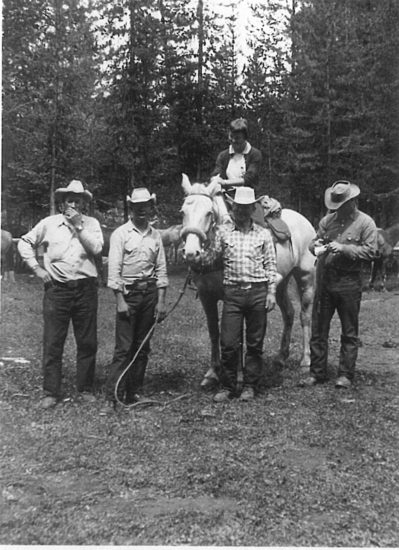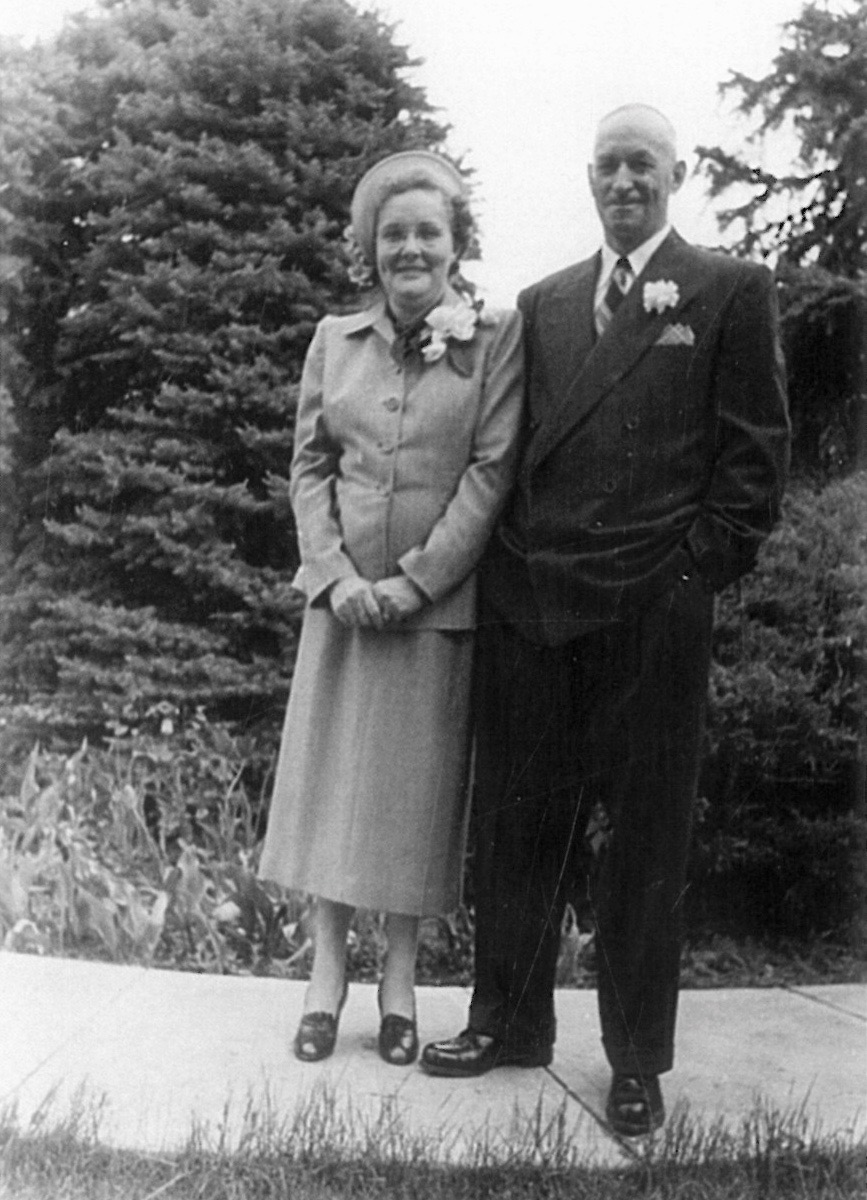-

Joseph B. Murphy
August 23, 1890 – February 24, 1972
Joseph B. Murphy was born in Great Falls to Joseph S. and Jennie Murphy in 1890. The family lived in the Highwood area of north-central Montana until 1904.
The younger Joe, who was the eldest of his siblings, possessed fortitude and a particular strength of will from a young age. When he was just 14 years old, he loaded up his parents, three sisters and baby brother, and relocated them to the west side of the Continental Divide with the help of a wagon and team. Family lore goes that Joe was concerned the family would starve if they didn’t move, so they made their way over the Mission Mountains to start a life in the Blackfoot Valley.
The Murphys settled southeast of Ovando near Brown’s Lake. They remained there for a number of years and lived east of the epicenter of the Great Fire of 1910. Joe worked for the Forest Service that summer, fighting the immense collection of blazes that burned an estimated 3 million acres in western Montana and Idaho. The story goes that the sky was so dark with smoke in the middle of the day that the cows would come into the barn to be milked at noon, thinking it was evening.
Joe was known for being his own man and an independent thinker. In 1911 he became a packer and guide in the Bob Marshall—one of its very first. The name of his outfitting business was “Joseph B. Murphy”; later it would become “Joseph B. Murphy & Sons.”
In March of 1918, Joe married Mattie, a 19-year-old woman who was born in Ovando. Between 1919 and 1935, the couple had three boys (Harold, Thomas and Robert) and two girls (Mary and Janie). Having left the Brown’s Lake Homestead, Joe and Mattie were living in a remote and forested area between Lincoln and Ovando they called “The Timbers.”
In the mid 1920s, Joe decided it was time to leave their tucked-away home. As his youngest daughter Janie recalls, he wanted his children to have more interaction with others. “He said, ‘These children will know nothing but trees! They’ve never seen any other children. They need to spend time with something other than wild animals.’”
The Murphys relocated to Ovando, to what would become the family’s home base, Murphy Ranch. During the summer and fall, Mattie would oversee the ranch operation while Joe led pack trips into the Bob Marshall. Murphy Flats, located at the confluence of the White River and the South Fork of the Flathead River, is named after Joe. Starting from a very young age, Joe’s sons would accompany him on these trips, and they all had a hand in the family business. Joe’s great-nephew Ted Murphy believes Joe dearly loved Murphy Flats and thought of it as his wilderness home.
Dating back to pre-WWII, Joe led large groups of people from all over the U.S. into the Bob Marshall. These groups of up to 40 people would sometimes cover two dozen miles in a day and were booked through the American Forestry Association, an organization that made arrangements for “those who would scorn the beaten path for the adventure of exploring little known trails on horse and foot.” The idea was that any man or woman with an average amount of outdoor experience could affordably tour different National Forests and National Parks around the West.
A 1956 Trail Riders of the Wilderness brochure describes the setting of these trips led by Murphy & Sons as a “domain of lofty mountains, dramatic in their boldness … softened by green, virgin forests and luxuriant flowered valleys.” During their trip, they would visit places like the Camp Creek Fire Lookout and the China Wall as they completed a loop that included Holland Lake, Monture, Ovando and of course, Murphy Flats.
Starting in her late teens and for a period of about 12 years, Janie spent three months of every summer cooking for these groups. A common meal might include a buffalo roast and potatoes for supper followed by a homemade pie for dessert. Janie recalls being impressed by the area’s variety of geology and abundance of wildlife; they would see 200 head of elk on any given day. Growing up, she enjoyed sharing meals with interesting people from all over the country. Well-traveled business executives like the vice president of Caterpillar became longtime family friends.
While Joe was leading summer pack trips and fall hunting trips, his wife Mattie oversaw the ranch operation, which included bison as well as cattle. At one time the Murphys had about three dozen head of bison, but they tended to pose problems when they wandered away during calving season, sometimes interfering with traffic on Highway 200. In the late 1950s, after a call from a distraught trucker waylaid by the massive animals, Joe sold the whole herd to a restaurant in Minneapolis.
Joe had a humble homestead in North Fork of the Flathead River before parts of the Bob Marshall were designated National Forest Primitive Areas in the 1930s, a precursor to its 1940 designation as the Bob Marshall Wilderness by Secretary of Agriculture Henry A. Wallace.
A 1967 document titled “The Flathead Story” that was completed under the direction of the Forest Supervisor of the Flathead National Forest noted that “Murphy’s outfit is perhaps the largest and best that has used the Bob Marshall Wilderness for any length of time”—high praise for an area so rich with outfitting history. It goes on to note that at that time Joe had personally used that area for 45 continuous years. He would have been 77 years old.
Joe passed away in 1972. His sons continued running the outfitting operation until 1985. Joe’s grandson, Ted Murphy, has carried on the tradition. In 2014, he purchased the White Tail Ranch from Tom and Melanie Parker. He keeps the area’s history—and his own family’s history—alive with an annual pack trip he calls the “Murphy History Trip.” The White Tail Ranch’s history is deep as well: it includes 40 years of ownership by MOGA members Jack and Karen Hooker, as well as Bob Marshall Wilderness legend “Hobnail Tom” Edwards before them.


